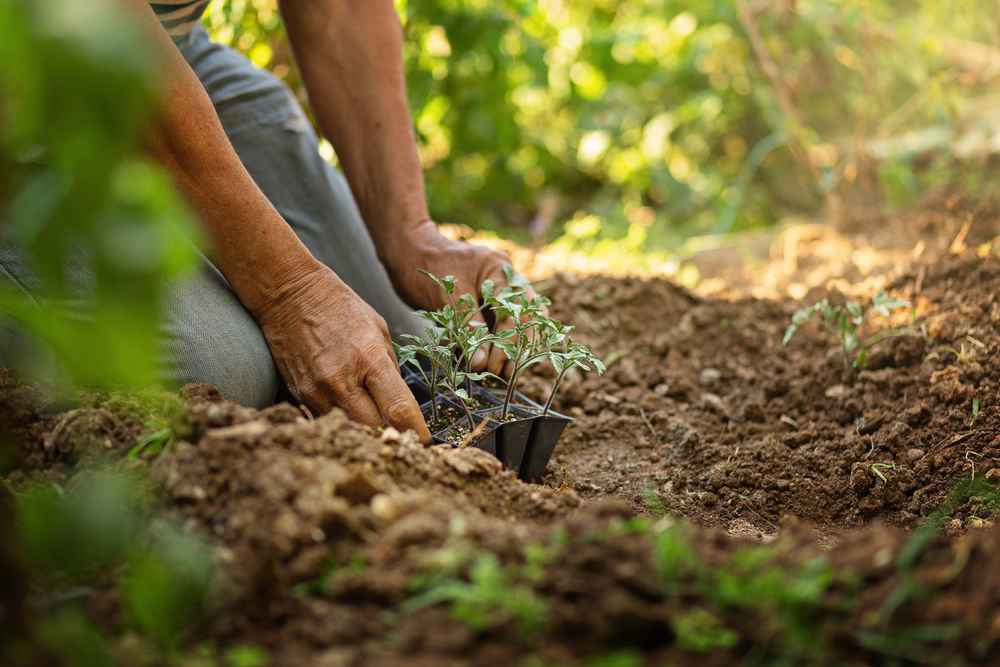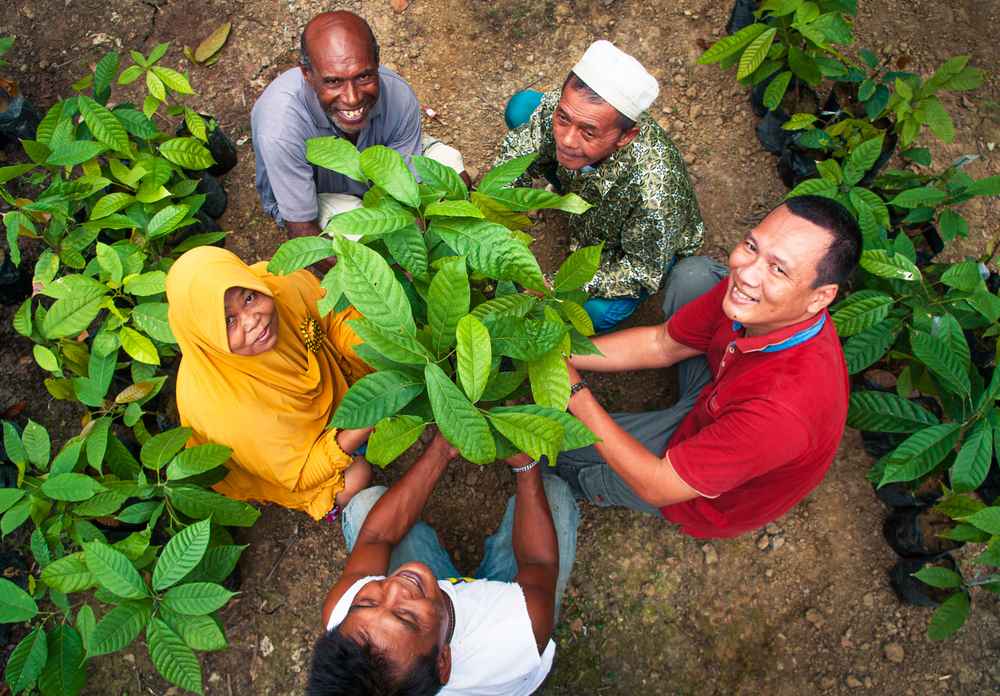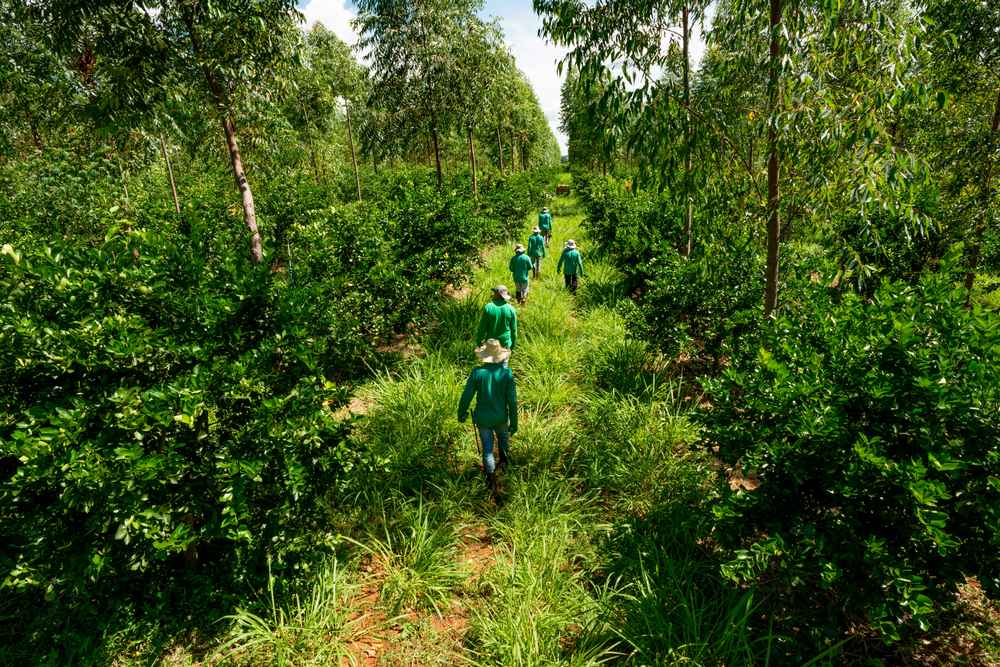The main focus of carbon farming is on implementing sustainable practices that primarily improve the absorption and retention of carbon from the atmosphere into productive soils. Therefore, enabling the lands' inherent ability to contribute to the large-scale removal of carbon.
A typical crop lifecycle involves interactions between plants, soil, water, air, sunlight, and nutrients. Similar to this, while carbon farming concentrates on reducing emissions, it also has a wide range of additional positive consequences with both direct and indirect benefits for farmers and farm productivity.
So, how do we balance the need to produce more food without destroying the planet? Carbon farming could be the solution that not only protects the climate but also restores biodiversity and benefits farmers.
The immediate and long-term effects make carbon farming a vital process for the environment, farmers and biodiversity, among other factors.
What is carbon farming?

By putting into practice techniques that are known to increase the rate at which carbon dioxide (CO2) is extracted from the atmosphere and stored in plant material and soil organic matter, carbon farming is a whole-farm strategy to improve carbon capture on working landscapes.
A carbon farming framework helps people interact with the agroecosystem processes that lead to system transformation. When regenerative agriculture is expressly founded in the underlying system dynamics and positive feedback processes that truly enable a 'regenerative' upward spiral of soil fertility and farm productivity, then carbon farming is identical to that term.
Read more: How regenerative agriculture is transforming sustainable farming
Here are a few examples of carbon farming:
- Livestock rotation: Regularly rotating livestock around different paddocks gives each paddock time to rest and recover between grazing periods.
- Organic mulch: Covering the soil with mulch, like wood chips or straw, improves moisture levels in the soil while allowing the organic material to interact with microorganisms, producing healthier, more fertile soil.
- Agroforestry: The practice of incorporating trees alongside farming activities—trees will store carbon emissions produced from farming and provide a range of benefits both above and below ground.
- Cover crops: Species like clover and vetch can be used to keep soil covered and carbon-rich through the winter or planted alongside cash crops during the growing season to offset carbon lost at harvest time.
- Reduced tilling: Tilling mixes soil with the air, which releases carbon back into the atmosphere. Tilling also breaks up the structure of the soil, making it less fertile. Regenerative tillage techniques help preserve soil quality and keep carbon in the soil.
Why is carbon farming good for the climate?
A significant amount of carbon currently in the atmosphere can be sequestered through carbon farming. Adding carbon to soil enhances the soil's capacity to hold water. In times of drought, this can improve water retention by reducing runoff during floods.
We as a species need to put sustainability at the heart of all our future activities if we’re to continue living comfortably on this planet. Carbon farming allows farmers to do just that— farm in a way that is sustainable and productive.

Why is carbon farming good for farmers?
Farmers can make impressive savings through carbon farming because it requires fewer resources. For example, using less fuel-powered machinery for tilling crops means less money is spent on fuel.
Capturing more carbon in the soil also makes it more productive, eliminating the need for fertiliser, which isn’t just harmful to the environment but also costs money.
And if we’re going to feed an extra 2 billion people in the next few decades, we’ll need farms around the world to be as productive as possible.
Carbon farming doesn’t just save farmers money—it can make money too. Farming can be an expensive business, and many farmers and their families often live on a financial knife edge.
Additional income streams, alongside more traditional ones, give farmers the chance to diversify without having to rely too heavily on one product. In an industry where success or failure can depend on a single growing season, extra income streams are essential. Carbon farming offers farmers another form of revenue through carbon offsetting. Effective carbon sequestration through farming produces carbon credits that are sold on carbon markets to other businesses that are looking to offset their own carbon emissions. So not only can farmers offset their own emissions, but they can also help others to do the same.
Why is carbon farming good for biodiversity?
Over the years, we’ve cleared millions of acres of grasslands and forest for agriculture. When these habitats are destroyed, the wildlife that depends on them struggles to survive, and many species are pushed to the edge of extinction.
Sadly, many species have already been pushed over that edge. Carbon farming practices like agroforestry can go a long way to repairing some of the damage caused by agriculture by giving nature safe places to live. Reduced reliance on chemical fertilisers allows delicate ecosystems to repair and thrive.
Biodiversity isn’t just good for animals and plants, it’s good for humans, too; in fact, it’s integral to our survival. We rely on the planet’s delicate ecosystems to grow our food, keep our water clean, and even produce the oxygen we breathe.
Carbon farming reduces the impact farming has on local ecosystems, so the delicate balance of nature is supported. Carbon farming works with nature rather than fighting against it, which is really what sustainability is all about.

Final thoughts
Carbon farming has a whole host of benefits that go beyond cutting the carbon emissions of the agricultural sector and enabling farms to operate with net zero emissions. It allows farmers to diversify through the sale of carbon credits, a welcome new income stream in an industry where success isn’t always guaranteed.
Unleash the potential of your land
Carbon farming also gives us the ability to repair the damage done to the environment in the past and create a more sustainable industry that can still meet the demands of a growing population.
Ready to find out more?
If you want to become a net-zero farmer but don’t know where to start, we can help. We’ll work with you to help you achieve your sustainability goals.



